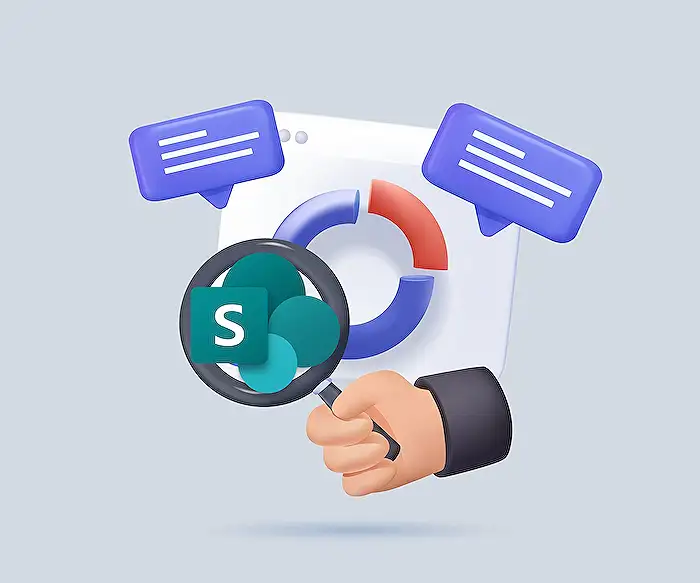SharePoint Hacks: Automate Metadata Updates Fast (Quick Steps Tutorial)
SharePoint Quick Steps automates tasks: update metadata, start Teams chats, send emails. Boost productivity with no coding.
Key insights
- SharePoint Quick Steps let you automate repetitive tasks, such as updating document metadata, starting Teams chats, and sending emails, all with a single click and no coding required.
- Bulk Metadata Updates are possible using Quick Steps, allowing users to set values for multiple documents at once without manual intervention.
- AI and Automation Tools, like Microsoft Power Automate and Azure Functions, work together to classify documents and extract metadata automatically in SharePoint libraries.
- Improved Accuracy is achieved because AI-driven solutions minimize errors when extracting and updating metadata compared to manual methods.
- Enhanced Document Management comes from consistent metadata, making it easier to search, filter, and comply with data governance rules within SharePoint.
- Template-Based Consistency ensures that standardized metadata fields are filled out across all documents by using templates integrated with automation workflows.
Introduction: Streamlining SharePoint Metadata with Automation
In a recent YouTube tutorial, Daniel Anderson [MVP] introduces viewers to the power of SharePoint Quick Steps, a feature designed to automate repetitive tasks within SharePoint libraries. The video, titled "Never Update SharePoint Metadata Manually Again (Quick Steps Tutorial)," demonstrates how users can set up one-click actions to perform complex operations—such as updating document metadata, initiating Teams chats, and sending emails—without writing a single line of code.
Anderson’s focus is on maximizing productivity by reducing manual effort. He emphasizes that most SharePoint users are unaware of these automation capabilities, which can save hours of tedious work. By leveraging built-in tools, organizations can ensure more accurate document management and free up valuable time for employees.
Understanding SharePoint Quick Steps
SharePoint Quick Steps are a set of customizable actions that allow users to automate common tasks inside modern SharePoint libraries. As Anderson explains, these Quick Steps are accessible through the SharePoint interface and require no technical expertise to implement. Users can create buttons that execute multiple actions, such as updating metadata fields or communicating with document owners, with just a single click.
Throughout the tutorial, Anderson walks viewers through the process of creating and managing Quick Steps. He highlights how these automations are especially beneficial for bulk operations, such as setting values across multiple documents or assigning ownership. The ease of use makes this feature accessible not only to IT professionals but also to everyday SharePoint users.
Benefits and Tradeoffs of Automation
One of the most significant advantages of SharePoint Quick Steps is the reduction in manual labor. By automating metadata updates and communications, organizations can minimize human error, improve data consistency, and accelerate document management workflows. This leads to better searchability and filtering within document libraries, making it easier for teams to find and organize their files.
However, Anderson also discusses some tradeoffs and challenges. For instance, while Quick Steps streamline many tasks, there are limitations when dealing with multi-document selections. Some actions may not be applicable to large batches, requiring users to balance efficiency with flexibility. Additionally, the simplicity of Quick Steps means they may not cover every complex scenario, especially compared to custom-coded solutions.
Integrating AI and Power Automate for Enhanced Functionality
Beyond the basics of Quick Steps, Anderson touches on the broader trend of integrating AI and Microsoft Power Platform services into SharePoint workflows. By leveraging AI-powered tools and Power Automate, users can further enhance automation—such as extracting and classifying metadata automatically. These technologies offer more advanced options for organizations seeking to scale their document management efforts.
The combination of AI, Power Automate, and Azure Functions allows for comprehensive document analysis and standardized metadata extraction. While these integrations offer powerful capabilities, they may introduce additional complexity and require ongoing maintenance or expertise to achieve optimal results.
Managing and Maintaining Quick Steps
Effective use of Quick Steps involves not only creation but also regular management. Anderson demonstrates how users can edit or delete outdated Quick Steps, ensuring their workflows remain relevant and efficient as business needs evolve. This aspect is crucial for maintaining a streamlined SharePoint environment and avoiding unnecessary clutter.
While the initial setup may require some investment of time, the long-term benefits include greater consistency and less manual intervention. Organizations must weigh the up-front effort against the potential productivity gains and decide how deeply to integrate automation into their daily operations.
Conclusion: A Shift Toward Effortless Document Management
Daniel Anderson’s tutorial highlights a significant shift in how organizations can approach SharePoint document management. By adopting Quick Steps and exploring AI-driven automation, teams can minimize repetitive tasks, improve accuracy, and focus on more strategic activities. Nevertheless, it is important to recognize the limitations and carefully manage automation tools to ensure they align with organizational goals.
Ultimately, SharePoint Quick Steps present a compelling case for modernizing workplace productivity. As more users become aware of these features, the balance between ease of use, flexibility, and advanced automation will continue to shape the future of digital document management.

Keywords
SharePoint metadata automation SharePoint metadata update tutorial automate SharePoint metadata quick steps update SharePoint properties automatically SharePoint list metadata tips save time SharePoint data management
